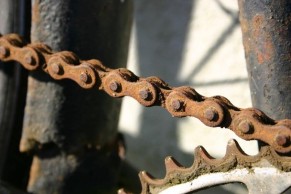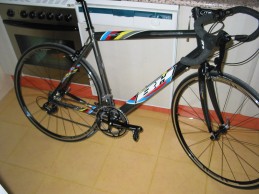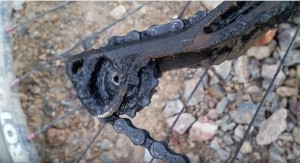What is the winter bicycle and why is it disappearing
Not so long ago, cyclists would save their good bike for when the good weather arrived and it was time to face the main objectives they had set for themselves. In the meantime, they had been training with the winter bike, a battle machine, cheaper and more resistant to beat without regard in those rainy days and dirt on the roads. Nowadays, few are those who maintain a bike of these characteristics.
The winter bike, a custom from another era
Many of you reading this have not lived in the era of steel and aluminum bikes, bikes that were heavily battered by winter weather conditions, leading to the appearance of rust on frames and components or, in the case of aluminum bikes, even accelerating the material fatigue inherent to aluminum.
That's why in that era cyclists usually had two bikes. The good one, which was equipped with the best group, the best wheels, components and top-notch tubulars in perfect condition. It was always impeccably clean and greased ready to be used on special days. On the other hand, there was the mule or the winter bike. A more battle machine, with a more normal frame, a lower group and wheels more resistant than light.

RECOMENDADO

Tips for cycling in the rain

25 cycling gifts ideas to get it right

When do helmets have to be changed? Do they have an expiration date?

Some reasons to stay away from the road in winter

The best apps for cycling and mountain biking

Black Friday 2025 cycling bargains: save on Garmin, POC, Maxxis and more
A bike that was mainly used to beat it in training during those winter months when you had to deal with rain or dirty roads and which was less expensive to replace any wear part. Besides, as it was only used for that purpose, it was usually equipped with mudguards to face those dog days with guarantees.
Currently, this custom is being lost. Only those who change bikes and can afford to keep the old one usually keep it, in many cases, just to place it indefinitely on the roller. Bikes that rarely return to the road unless the main one suffers a breakdown that leaves us without it longer than desired.
It is clear that, with the price of current bikes few are those who can afford to have two bikes of the same type to alternate. Even if one of them is mid-range, the current bikes with a minimum of quality for someone who can consider having a winter bike is already important.

Besides, nowadays, who more or who less, besides the road bike also has the mountain bike, the urban bike, the gravel bike. By the way, these last ones could be considered for their versatility and the ability to withstand hard treatment as the closest thing to a winter bike that we can find today.
Besides, we have to take into account the space limitations. It is often already difficult to fit two types of bikes in a flat let alone have to duplicate one of the ones we have. Also, we cannot forget the social factor. In this era of social networks, whoever has a top-notch bike wants to show it off on every outing and that also implies using it in winter. In any case, to the modern carbon frames, to the current wheels with sealed and ceramic bearings or to the electronic groups the inclemencies of the weather affect them much less than to the old steel bikes.
Instead of having a winter bike what some do maintain is a more battle wheels, aluminum, lower profile to deal with windy days and mounted with training tires, puncture resistant and more durable to be used on a daily basis, reserving the carbon wheels and their exquisite bearings for the weekend outing in which we seek to show off in the group or already for when summer arrives.

In any case, performing a correct maintenance of the bike, where we clean and lubricate it, especially after rainy days and wet roads, and replace in due time the wear components, mainly the chain which is the one that suffers the most with wet and dirty roads, we can use our bike without fear all winter since, as we say, carbon is not affected by rain or humidity.
